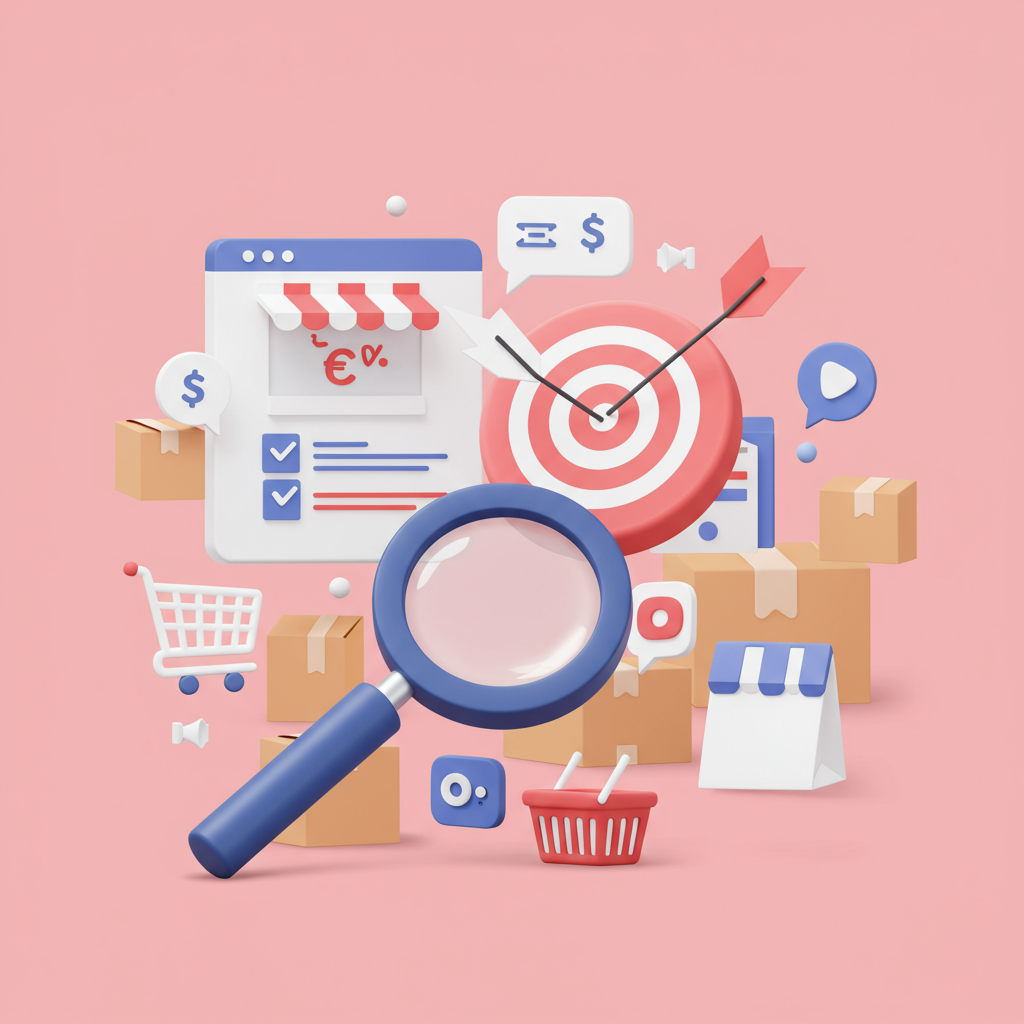Unlock the full potential of your e-commerce store by precisely reaching your ideal customers on Facebook and Instagram.
As a Shopify merchant, you’re constantly looking for ways to grow your sales and reach more customers. In today’s competitive e-commerce landscape, simply having a great product isn’t enough; you need to connect with the right people.
That’s where Facebook and Instagram ads come in. With billions of active users, these platforms offer an unparalleled opportunity to put your products directly in front of potential buyers.
However, running successful Facebook ads isn’t just about boosting a post. It’s about strategic targeting. My goal today is to walk you through the most effective Facebook ad targeting strategies specifically tailored for Shopify stores.
First, let’s establish a fundamental truth: your success hinges on understanding your audience. Who are they? What are their interests? What problems do your products solve for them?
Before you even think about ad sets, take time to build detailed customer personas. This foundational work will inform every targeting decision you make.
The cornerstone of any effective Facebook ad strategy for Shopify is the Facebook Pixel. If you haven’t installed it yet, stop reading and do it now!
The Pixel is a small piece of code that you place on your Shopify store. It tracks visitor behavior, such as page views, add-to-carts, and purchases.
This data is invaluable. It allows Facebook to understand who is interacting with your store, which then enables incredibly powerful targeting options.
Once your Pixel is firing correctly, you can start exploring Facebook’s core targeting options. These include demographics, interests, and behaviors.
Demographics allow you to target based on age, gender, location, language, education, relationship status, and even job titles. Think about who your ideal customer is and narrow down these options.
Interests are where it gets really powerful. You can target users based on their stated interests, pages they like, and activities they engage in on Facebook.
For example, if you sell eco-friendly products, you might target people interested in ‘sustainable living,’ ‘organic food,’ or ‘environmental conservation.’ Be specific, but also consider broader categories.
Behaviors are another fantastic layer. Facebook tracks various user behaviors, such as purchase behavior (e.g., ‘online shoppers’), digital activities, and even travel patterns.
Combining these core targeting options allows you to create a highly refined audience. Don’t be afraid to experiment with different combinations.
Now, let’s dive into what I consider the most impactful targeting strategies for Shopify merchants: Custom Audiences.
Custom Audiences allow you to target people who have already interacted with your business in some way. These are often your warmest leads.
The most common and effective Custom Audience is ‘Website Visitors.’ With your Pixel installed, you can create audiences of everyone who visited your store, or even specific pages (like product pages or checkout pages).
You can segment these visitors by time spent on your site or by specific actions they took, such as adding an item to their cart but not purchasing.
Another powerful Custom Audience is your ‘Customer List.’ Upload your existing customer emails or phone numbers to Facebook. This allows you to target your loyal customers with new product launches or exclusive offers.
You can also create Custom Audiences based on engagement with your Facebook Page or Instagram profile, video views, or even people who have interacted with your lead forms.
These audiences are incredibly valuable for retargeting campaigns, reminding potential customers about products they viewed or encouraging past buyers to return.
Building on Custom Audiences, we have Lookalike Audiences. This is where you truly scale your advertising efforts.
A Lookalike Audience is created by taking a ‘seed’ Custom Audience (e.g., your purchasers, your top 10% website visitors) and asking Facebook to find new users who share similar characteristics.
Facebook’s algorithm is incredibly sophisticated at finding these lookalikes. You can choose the size of your Lookalike Audience, typically ranging from 1% (most similar) to 10% (broader).
I always recommend starting with a 1% Lookalike Audience based on your purchasers. These are the people most likely to convert, as they resemble your existing best customers.
You can create multiple Lookalike Audiences from different seed sources: website visitors, add-to-carts, or even high-value customers from your customer list.
Layering your targeting is an advanced strategy that can yield excellent results. For example, you might target a Lookalike Audience of purchasers, but then narrow it down by specific interests relevant to your product.
Don’t forget about exclusion targeting. If you’re running an ad for new customers, you’ll want to exclude your existing purchasers to avoid wasting ad spend.
Dynamic Product Ads (DPAs) are a must-have for Shopify stores. These ads automatically show products to users based on their past interactions with your store.
If someone viewed a specific product on your Shopify site but didn’t buy, a DPA can show them that exact product in their Facebook feed, often with a gentle reminder.
Finally, always be testing and optimizing. A/B test different audiences, ad creatives, and ad copy. What works today might not work tomorrow.
Monitor your key metrics: Cost Per Purchase, Return on Ad Spend (ROAS), and Click-Through Rate (CTR). Adjust your strategies based on the data.
I’ve covered a lot of ground here, from the essential Facebook Pixel to advanced Lookalike Audiences and Dynamic Product Ads. What are your thoughts on these strategies? Have you found particular success with any of these approaches in your own Shopify store?
Implementing these detailed targeting strategies will significantly improve your ad performance and, ultimately, your Shopify store’s profitability. It’s not just about spending money; it’s about spending it wisely.
By understanding your audience, leveraging the Pixel, and strategically using Custom and Lookalike Audiences, you’ll be well on your way to mastering Facebook ads for your Shopify business. Happy selling!






